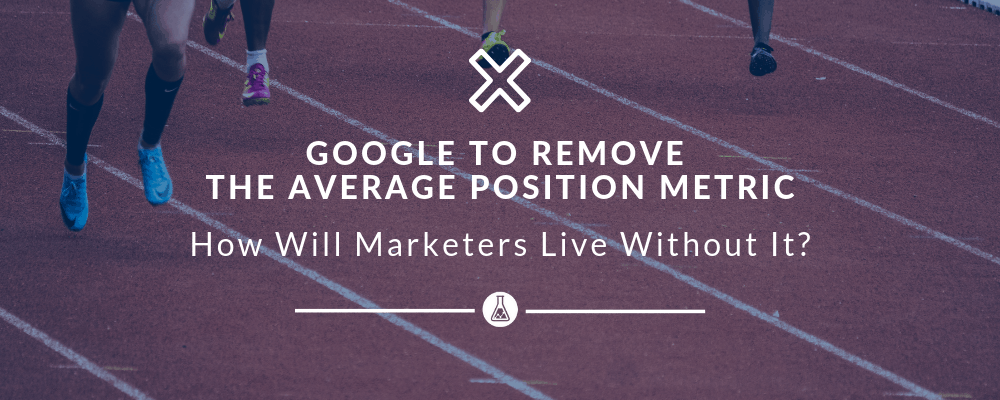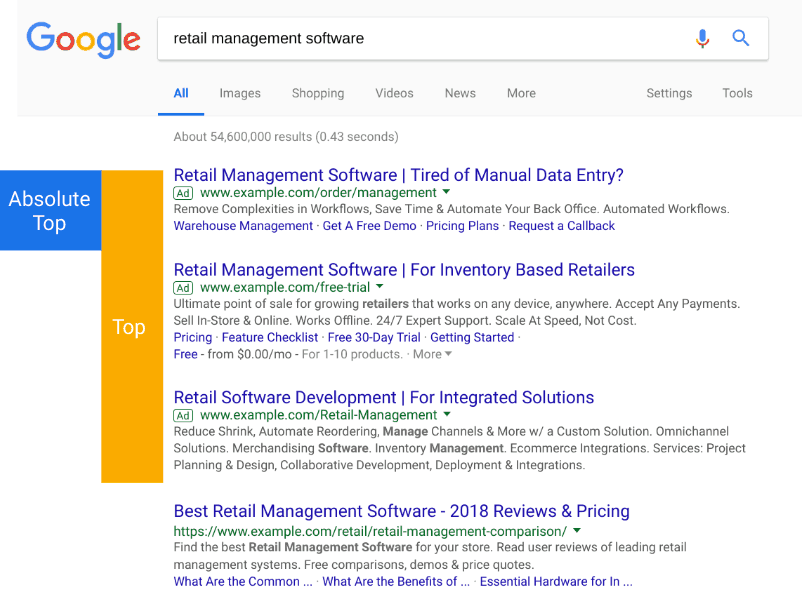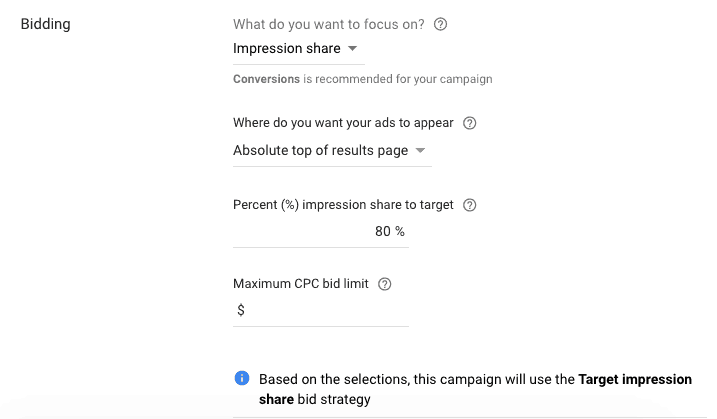Farewell, Google Ads Average Position! You’ve been a good metric!
By now, you’ve probably heard the news. You maybe even panicked a little. But in case you haven’t heard, Google recently announced that they are preparing one of their oldest (and for some, one of the ‘goldest’) metrics’ retirement: the average position metric.
Fear not, it’s not the end of the world. It’s not going to happen tomorrow, or even next month, but sometime in September 2019. This means that we’ve got plenty of time to get used to the average position alternative metrics. Are there any? Of course there are!
What is Google Ads average position anyway?
Google Ads average position (Avg. pos.) is determined in part by Ad Rank. Every time your keywords enter an auction, you’re assigned an Ad Rank, calculated based on your bids and Quality Score.
Average position is not the actual position your ad showed on the Google Search Results Page. It’s just (surprise!) the average of where your ad showed against your competitors’ ads. If your average position is 3, it doesn’t mean your ad showed on the 3rd ad position on the results page. It could have also been displayed way down the SERP, below the organic results or even on the second page.
Let’s say your ad has had 5 impressions. The ad is displayed in positions 4 – 6 – 2 – 1 – 2. Its average position will be 3, even though the ad was never served on that actual position.
What alternatives to average position will marketers have?
The average position metric has been around for about 15 years. There are people still relying on it for bidding purposes. But, as usual, Google makes sure that marketers have alternatives when they decide to remove important features.
In November last year, Google introduced new metrics for measuring the auction performance and the SERP visibility: the Top and Absolute Top metrics.
These can be seen as two kind of metrics:
- Metrics that tell you about the location of your ads and
- Metrics you can bid on to improve the location of your ads.

1. Metrics about the location of your ads
- Search top impression rate “Impr. (Top) %” – it shows the percentage of your impressions that appear anywhere above the organic results.
Search top impression rate formula:
Impressions on top / Impressions
- Search absolute top impression rate “Impr. (Abs.Top) %” – it shows the percentage of your ads that were shown on the very first position of the SERP, above the organic results.
Search absolute top impression rate formula:
Impressions on the absolute top / Impressions
2. Metrics you can bid on to improve the location of your ads
- Search top impression share “Search top IS” – it shows the impressions you received on top of the SERP, compared to how many you were eligible to receive in the same location.
Search top impression share formula:
Impressions on top / Eligible impressions on top
- Search absolute top impression share “Search abs. top IS” – it shows the impressions you received on the absolute top of SERP, compared to how many you were eligible to receive in the same location.
Absolute top impression share formula:
Impressions on absolute top / Eligible impressions on top
- Search lost top impression share (budget)
- Search lost absolute top impression share (budget)
- Search lost top impression share (rank)
- Search lost absolute top impression share (rank)
So, it seems that we have about 6 months to get used to these new metrics and switch to them. However, they are not the only ones. We have another rising star, a new kiddo in the block: the Click Share.
- Click Share – it indicates how many clicks your ads received out of the total number of times Google estimates your ads could have been clicked. It basically shows how effectively your ads are engaging users compared to your competitors.
The conundrum of average position’s sunset
While learning to say goodbye to the average position metric, there is one current issue, though: location optimization.
For now, average position is the only competitive metric at the locations level, and the others haven’t been implemented (yet?). So I’m curious what Google has in mind for advertisers who want to optimize for the top position in all their targeted locations.
Tips for whatever the future has in store with average position (or any other metrics)
- Start to learn the new metrics. We need to adapt to the new impression share metrics. The faster we start the transition to them, the better. We’re going to get more visibility as long as we learn to understand them. Segment performance by device and see what’s your campaigns’ situation there too.
- Play more with the auction insights reports to see how your ads look compared to other competitors.
- Make use of automated strategies: Target Search Position bidding strategy or the more recently released Target Impression Share bidding strategy.
- Adjust your reports. Add the new ad position metrics and start removing the old one.
Parting is such sweet sorrow, Google Ads Average Position. But it’s time to move on, and let other metrics shine!





